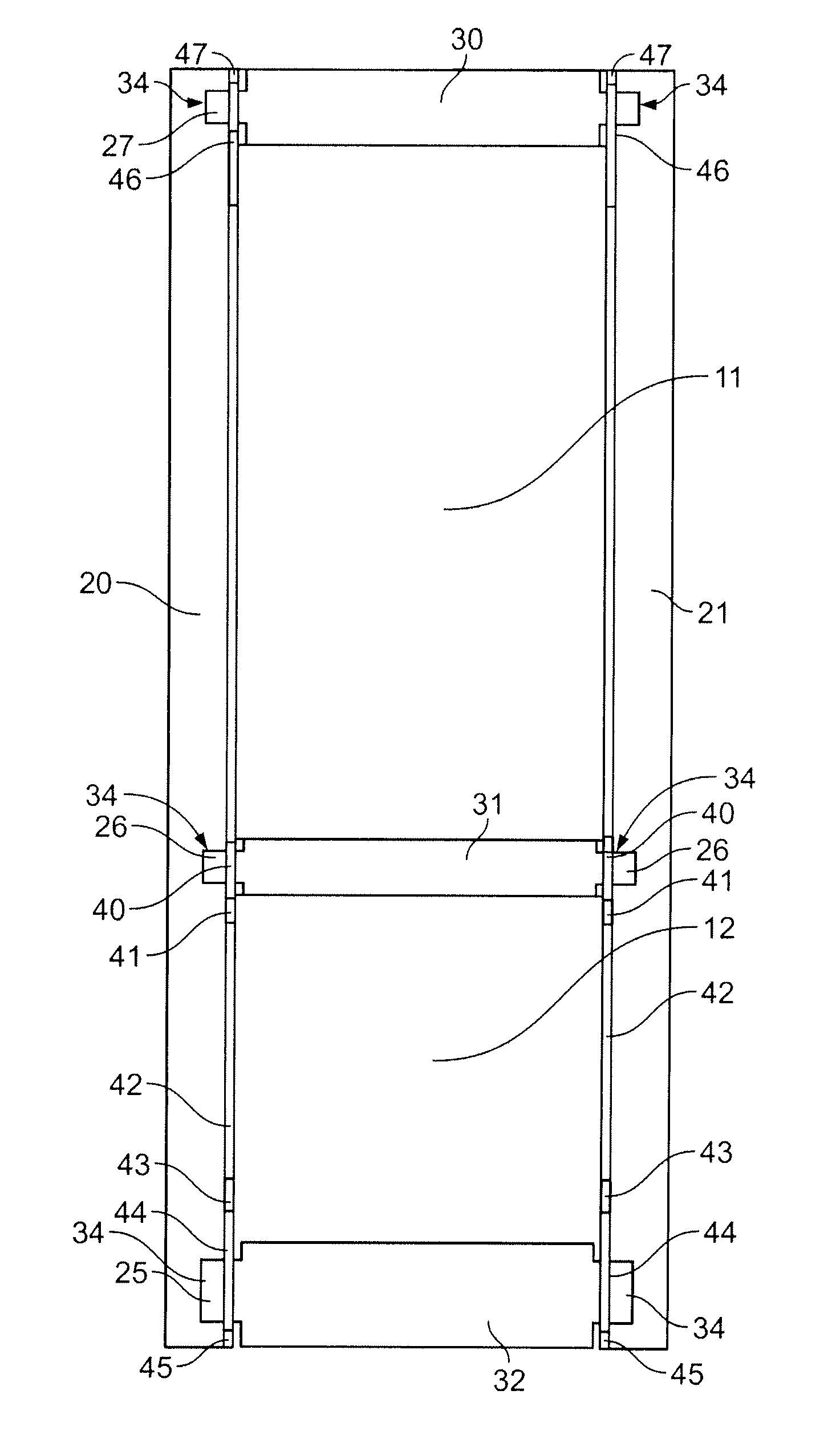Modular door assembly
a module and door technology, applied in the field of module door assembly, can solve the problems of inability to deliver doors in disassembled state, inability to replace doors, long and complicated process of manufacturing and assembly of doors, etc., to prevent buckling and deformation of doors under force, eliminate the use of glue, and eliminate the curing time
- Summary
- Abstract
- Description
- Claims
- Application Information
AI Technical Summary
Benefits of technology
Problems solved by technology
Method used
Image
Examples
Embodiment Construction
[0072]FIG. 1 illustrates an exploded view of the modular door 10. This modular door comprises a first stile 20, a second stile 21 and a minimum of a top rail 30 and a bottom rail 32. The door should also comprise at least one intermediate rail 31. Depending on the design requirements, the door may include additional horizontal rails between the top and bottom rails 30 and 32. Locked between the stiles and the rails, there are panels 11 and 12. The panels can be manufactured any way and from any material known to a person skilled in the art of door manufacturing, and the number of panels may vary according to the number of rails.
[0073]Each stile comprises a plurality of mortises corresponding to a set of tenons positioned on the rails, best illustrated in FIG. 2, and there is a set of pins or dowels (40-44 and 46), which retain the tenons inside the mortises of each stile.
[0074]FIG. 2 illustrates rail 31 with tenon 34 positioned proximate to its corresponding mortise 26 in the stile ...
PUM
 Login to View More
Login to View More Abstract
Description
Claims
Application Information
 Login to View More
Login to View More - R&D
- Intellectual Property
- Life Sciences
- Materials
- Tech Scout
- Unparalleled Data Quality
- Higher Quality Content
- 60% Fewer Hallucinations
Browse by: Latest US Patents, China's latest patents, Technical Efficacy Thesaurus, Application Domain, Technology Topic, Popular Technical Reports.
© 2025 PatSnap. All rights reserved.Legal|Privacy policy|Modern Slavery Act Transparency Statement|Sitemap|About US| Contact US: help@patsnap.com



